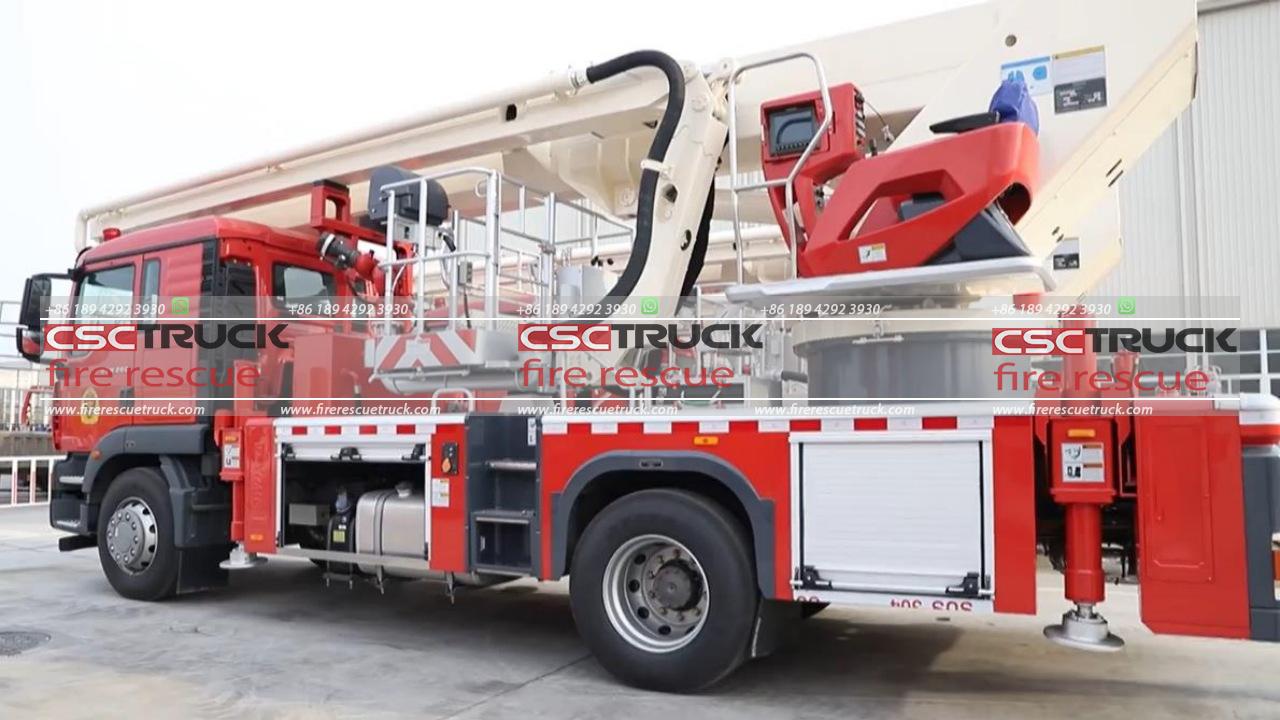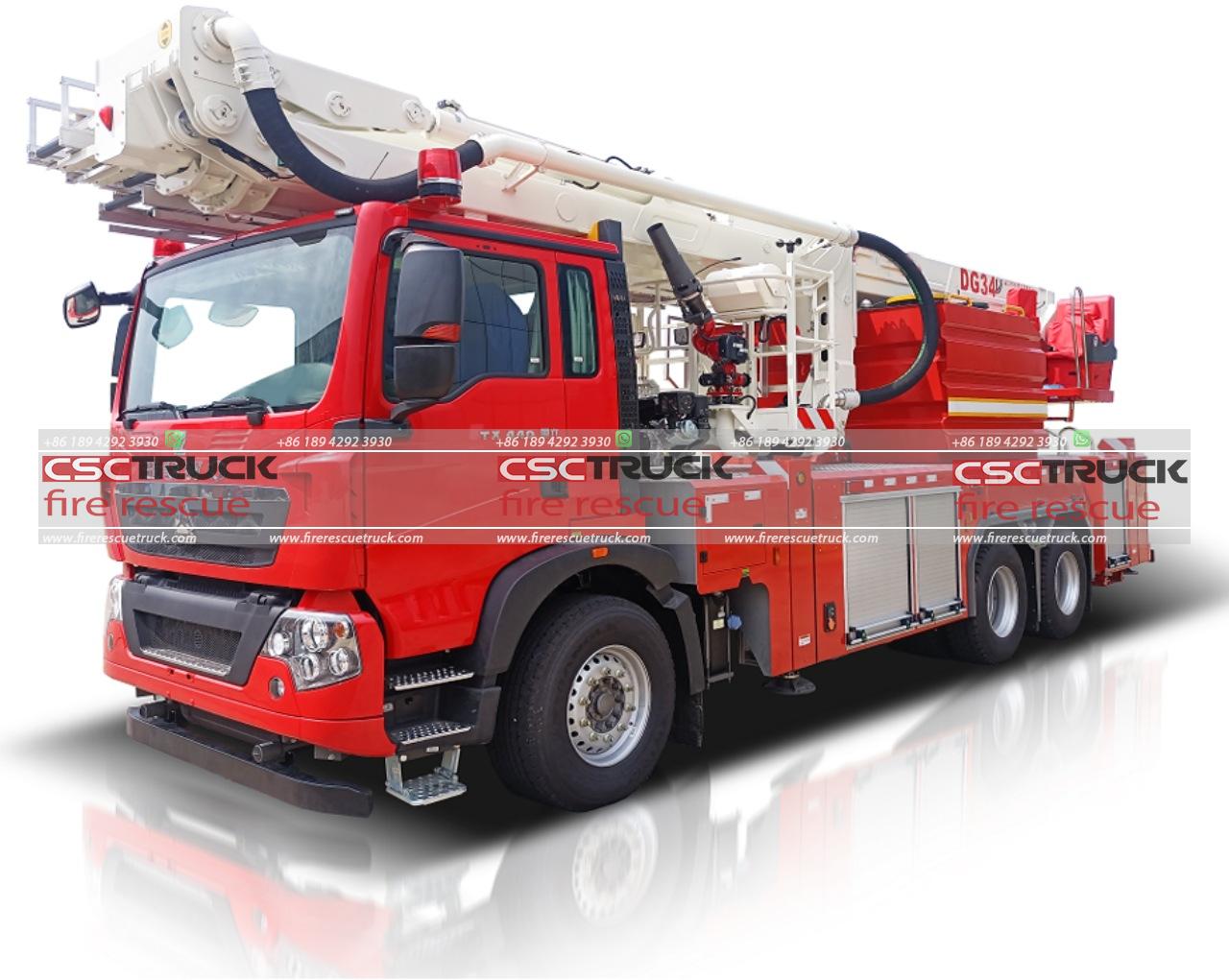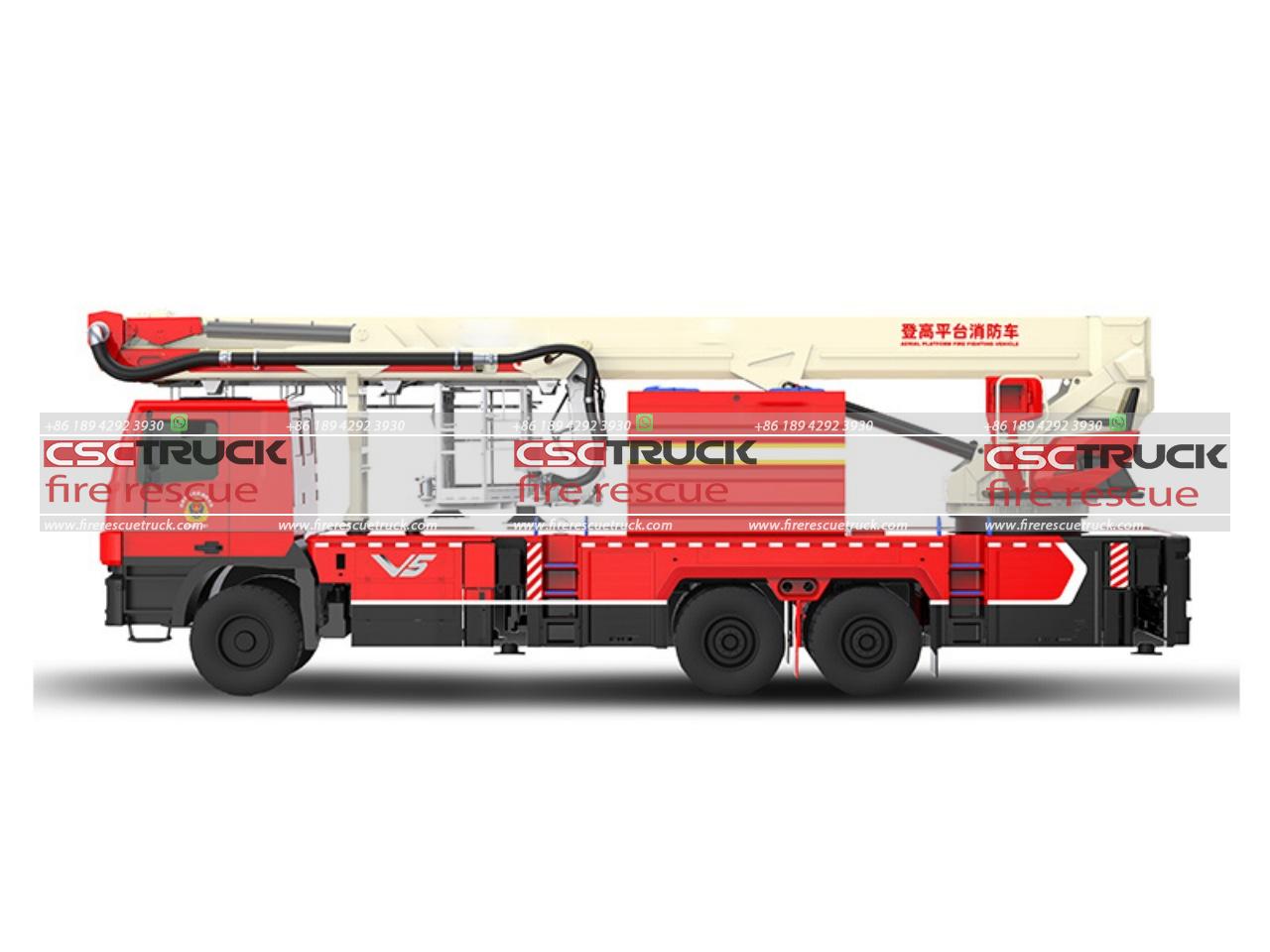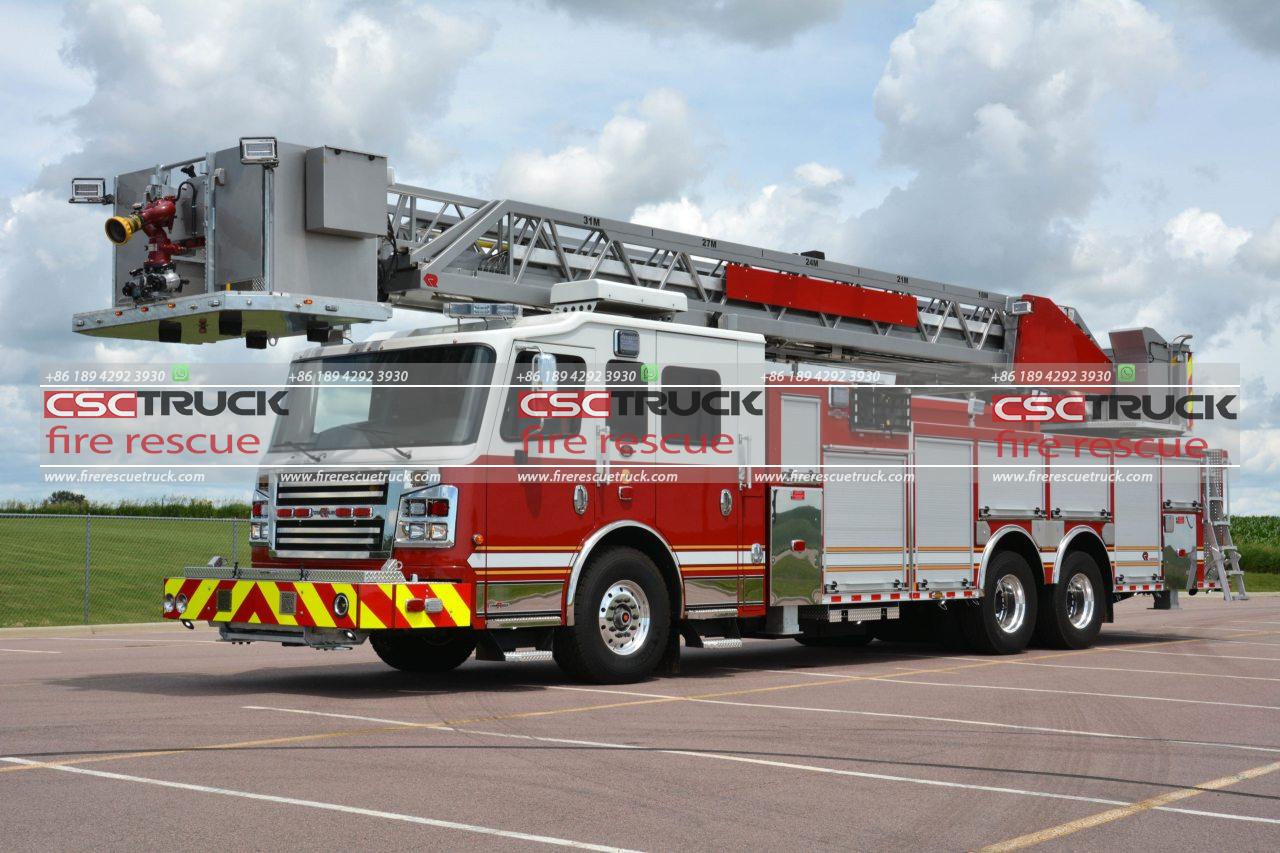What is an Aerial Fire Truck?
Fire trucks are essential tools for firefighting and rescue operations, but not all fire trucks are created equal. Among the various types, the aerial fire truck stands out for its unique capabilities. Aerial fire trucks play a critical role in high-rise fire suppression, rescue missions, and other challenging emergencies. This article will delve into what makes an aerial fire truck distinctive, its various components, and types, and how it contributes to firefighting efficiency.
Definition and Purpose of an Aerial Fire Truck
An aerial fire truck is a specialized firefighting vehicle designed to provide elevated access for firefighting, rescue, and ventilation operations. Equipped with an extendable ladder or platform (commonly referred to as an “aerial”), these trucks allow firefighters to reach high-rise buildings, elevated terrains, or difficult-to-access areas that traditional ground-level equipment cannot reach.
The main purpose of an aerial fire truck is to assist in situations where height or reach is crucial. In urban environments with tall structures, aerial trucks are often indispensable for rescuing occupants from upper floors or delivering water to heights beyond the reach of conventional hoses. Additionally, these vehicles provide stable, elevated platforms that allow firefighters to perform ventilation work by cutting through roofs to release smoke and heat from burning buildings.

Key Components of an Aerial Fire Truck
1. Aerial Ladder or Platform
The most prominent feature of an aerial fire truck is the extendable ladder or platform. Ladders can range in length, typically from 50 to over 100 feet, depending on the truck’s specifications. The ladder or platform is mounted on a rotating turntable, giving it 360-degree mobility to reach different angles.
Some aerial fire trucks are equipped with a “bucket” or platform at the end of the ladder, allowing firefighters to carry multiple people or heavy equipment. This platform can often support weights of several hundred pounds, making it ideal for rescue operations.
2. Pump and Water Delivery System*
In addition to ladders, many aerial fire trucks are equipped with powerful water pumps. The truck has a built-in water delivery system that channels water from hydrants or the truck’s onboard water tank to the elevated nozzle or hose. Some aerial fire trucks feature master stream devices, which allow for high-volume water delivery from an elevated position, a feature especially useful for large-scale fires.
3. Outriggers
Stability is key when extending a ladder to great heights. Aerial fire trucks are equipped with stabilizing devices known as “outriggers” or “jacks.” These extend from the sides of the truck to provide a broader base, ensuring the vehicle remains secure and balanced during operation.
4. Control Systems
Aerial fire trucks come equipped with sophisticated control systems that operate the ladder or platform. These controls are often located in the truck’s cab, but secondary controls may be situated on the ladder or platform itself. Modern aerial trucks are also equipped with automated leveling systems, ensuring that the ladder remains horizontal even on uneven terrain.
5. Cab and Crew Accommodations
Aerial fire trucks typically have a large, enclosed cab where the crew operates. These cabs are designed to accommodate multiple firefighters, usually between 4 to 6. The cab is equipped with radios, navigation systems, and other communication tools necessary for coordinating with other units on the ground.
Types of Aerial Fire Trucks
Aerial fire trucks come in different configurations, each designed to serve specific purposes. Here are the most common types:
1. Straight Aerial Ladder Truck
This is the classic image most people associate with aerial fire trucks. It features a long, straight ladder that can extend to significant heights. These trucks are valued for their simplicity, versatility, and ability to reach high places quickly.
2. Tower Ladder Truck
A tower ladder truck has a platform or bucket at the end of the ladder, giving it additional versatility. Tower ladders are useful for rescue missions, allowing firefighters to move people to safety without needing them to climb down the ladder. The platform also provides a stable base for conducting ventilation work or operating a high-volume nozzle during firefighting.
3. Articulating Aerial Platforms
Also known as “snorkels,” these trucks have a hinged arm or boom that allows them to reach around obstacles or access areas that a straight ladder cannot. The flexibility of an articulating aerial platform makes it an excellent tool for urban areas where buildings are densely packed, and traditional ladder trucks may face challenges in positioning.
4. Quint Fire Truck
A quint (short for quintuple) is a multi-functional vehicle that combines the capabilities of an aerial ladder, pump, water tank, and ground ladders. Quint trucks are highly versatile and can switch between roles during an operation. They can either fight fires with their pumps and water supply or perform rescue and elevated operations using the aerial ladder.

How Aerial Fire Trucks Improve Firefighting Efficiency
Aerial fire trucks are critical to enhancing the overall efficiency of firefighting operations, especially in urban environments or large-scale incidents. Here’s how:
1. Enhanced Reach for High-Rise Fires
One of the primary advantages of an aerial fire truck is its ability to reach the upper floors of tall buildings quickly. Fires in high-rise buildings pose unique challenges, as smoke and heat naturally rise and create dangerous conditions for occupants on higher floors. Aerial trucks can access these floors rapidly, providing firefighters with a stable platform for evacuation or applying water directly to the fire.
2. Improved Water Application
Aerial trucks equipped with master stream nozzles allow firefighters to apply large volumes of water from an elevated position. This helps in containing large fires more quickly, as the water can be directed to critical areas such as roofs or windows. The elevated nozzle also helps maintain a safe distance for firefighters while attacking the blaze.
3. Rescue Operations
During rescue missions, especially in high-rise or large-scale incidents, aerial fire trucks provide critical access for saving lives. The ability to position the truck’s ladder or platform directly at windows or balconies makes it easier for firefighters to rescue people who may be trapped and unable to evacuate through stairwells.
4. Ventilation and Fire Suppression
Proper ventilation is crucial in controlling fires, as it allows smoke and heat to escape the building, reducing the likelihood of flashover. Aerial trucks provide an elevated platform for firefighters to access the roof, cut ventilation holes, and remove dangerous gases, thus controlling the spread of the fire.
Challenges and Limitations
Despite their advantages, aerial fire trucks come with some limitations. Their large size and weight can make them difficult to maneuver in narrow streets or crowded urban areas. Additionally, setting up the outriggers requires ample space, which may not always be available in dense neighborhoods or cluttered industrial sites.
Aerial trucks are also expensive to maintain and operate. They require specialized training for operators, and routine inspections must be performed to ensure that the ladder, hydraulic systems, and other components remain in optimal condition.

Conclusion
In modern firefighting, aerial fire trucks are indispensable tools, particularly for dealing with complex urban environments and large-scale emergencies. From rescuing people trapped in high-rise buildings to delivering water from elevated heights, these trucks serve as vital assets to fire departments worldwide. Their unique combination of mobility, stability, and versatility makes them an essential part of firefighting strategies, enabling firefighters to reach where ground units cannot and perform life-saving operations efficiently.







